Overview
This article delineates best practices for effective secondary packaging solutions, underscoring the critical importance of product protection, enhancing customer experience, and ensuring regulatory compliance. It substantiates these points by highlighting significant trends, including:
- The shift towards sustainable materials
- The necessity for aesthetically appealing designs that bolster brand recognition
- The integration of filling services to streamline operations
Each of these elements is essential for maintaining product integrity and fostering consumer confidence within the nutraceutical industry.
Introduction
Effective secondary packaging stands as the unsung hero of the supply chain, playing a pivotal role in both protecting products and enhancing brand visibility. As businesses encounter mounting pressure to meet consumer expectations and sustainability goals, grasping the best practices for secondary packaging becomes imperative.
How can companies achieve the right balance between aesthetics, functionality, and compliance to not only safeguard their products but also elevate the customer experience? This article explores key strategies that can transform secondary packaging from a logistical necessity into a powerful tool for brand engagement and operational efficiency.
Define Secondary Packaging and Its Importance
Secondary wrapping is the outer layer that contains and safeguards primary containers, which directly hold the item. This crucial component serves multiple purposes: it protects items during transport, provides essential information, and enhances brand visibility on retail shelves. Efficient secondary packaging solutions are vital for companies, particularly in the nutraceutical industry, where item integrity and consumer confidence are paramount. By ensuring that products arrive undamaged and are presented attractively, companies can significantly improve customer satisfaction and loyalty. Furthermore, secondary containers streamline logistics by optimizing space and facilitating easier handling during distribution, ultimately leading to cost savings and improved operational efficiency.
Recent trends indicate a rising dependence on contract services for secondary wrapping, with 65 percent of industry participants outsourcing at least a portion of their production processes. Additionally, 75 percent indicate they are collaborating more frequently with suppliers on new secondary container designs and strategies. This shift reflects a broader movement towards innovative and sustainable solutions for containers that meet the evolving demands of consumers and retailers alike.
Companies are increasingly focusing on sustainability, seeking to reduce material usage and replace non-sustainable materials with eco-friendly alternatives. For instance, a recent case study highlighted how a nutraceutical manufacturer successfully revamped its secondary containers to enhance sustainability while maintaining product integrity. However, companies must also recognize typical traps, such as undervaluing the significance of container aesthetics and neglecting to account for the logistics of distribution. These oversights can lead to higher expenses and customer discontent.
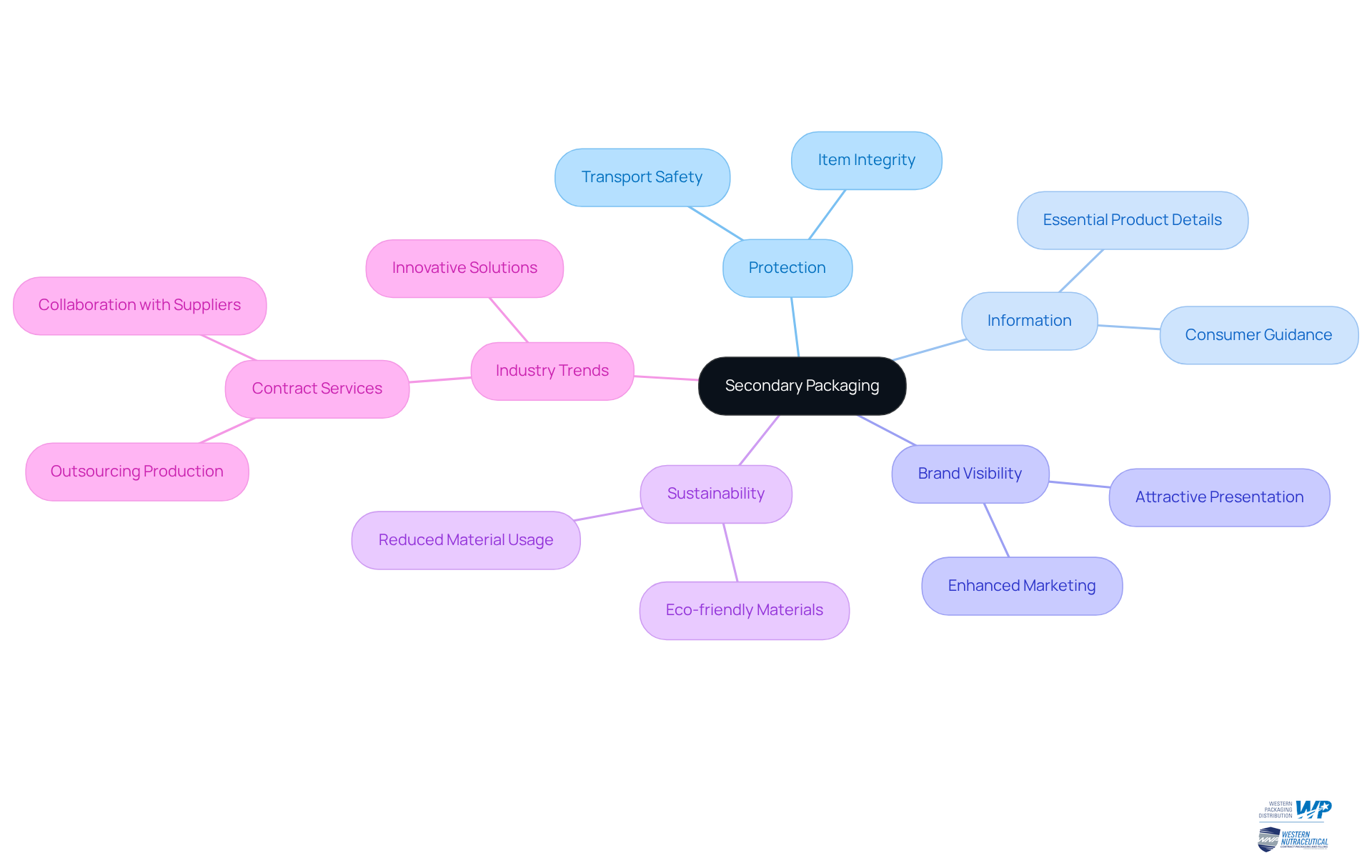
Enhance Customer Experience Through Effective Packaging
Effective packaging transcends mere functionality; it is integral to shaping the customer experience. By employing high-quality materials and innovative designs, businesses can craft a memorable unboxing experience that resonates with customers. For instance, incorporating easy-to-open features or eco-friendly materials not only enhances user satisfaction but also aligns with customer values. Moreover, clear labeling and informative presentation empower customers to make informed choices, further elevating their experience.
Businesses should consider conducting client surveys or focus groups to gather insights on packaging preferences, allowing them to tailor their solutions to meet customer expectations effectively.
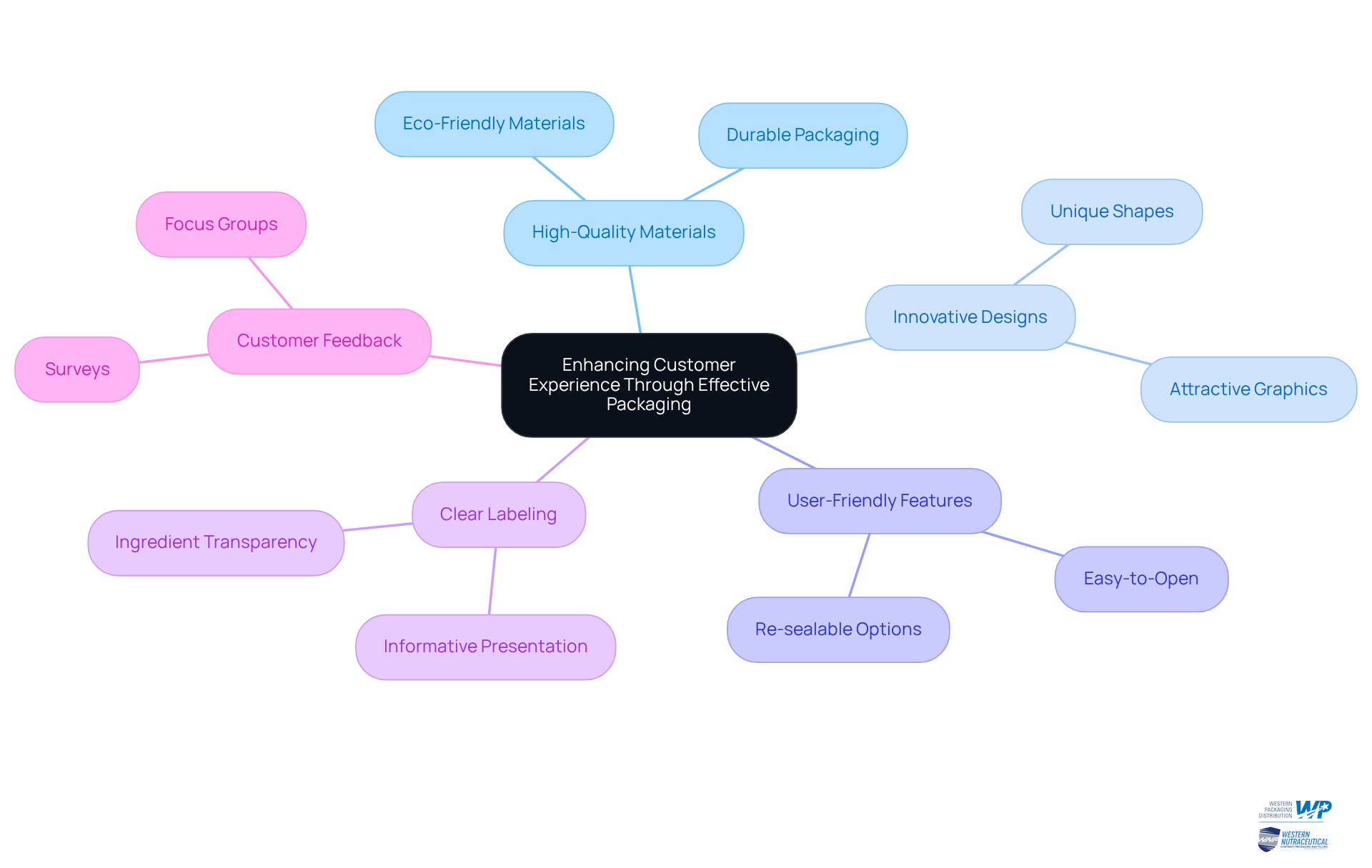
Incorporate Design Elements for Maximum Impact
Incorporating strategic aesthetic components into secondary packaging solutions significantly enhances brand recognition and shelf appeal. Businesses must prioritize color schemes, typography, and imagery that authentically reflect their brand identity and resonate with their target audience. For instance, employing vibrant colors and striking visuals can effectively draw interest in a saturated marketplace, while minimalist styles may appeal to consumers seeking simplicity and elegance. Moreover, storytelling through packaging—by emphasizing the advantages of the product or the brand's mission—can forge an emotional connection with consumers. Collaborating with skilled creators who understand market trends ensures that container aesthetics are not only visually appealing but also effective in conveying the brand message.
At Western Packaging, we specialize in customized flexible solutions, including large pouches for protein items and stick packs for nutraceuticals, which serve as secondary packaging solutions designed to elevate appeal and enhance brand recognition. Our creative design services ensure that your products stand out on the shelf, with tailored solutions that address your specific needs. Research indicates that effective wrapping serves as a visual messenger, communicating and informing customers about product features, properties, and benefits. As industry experts assert, "Custom wrapping is not merely a logistical tool; it’s a necessity for companies aiming to stand out in a competitive market." By employing these creative strategies, nutraceutical brands can significantly improve their market presence and boost customer engagement. However, it is crucial to avoid common pitfalls in product presentation, such as overcrowding the layout with excessive information or failing to align the container with the brand's core principles. Implementing these design strategies can lead to increased consumer loyalty and improved sales performance.
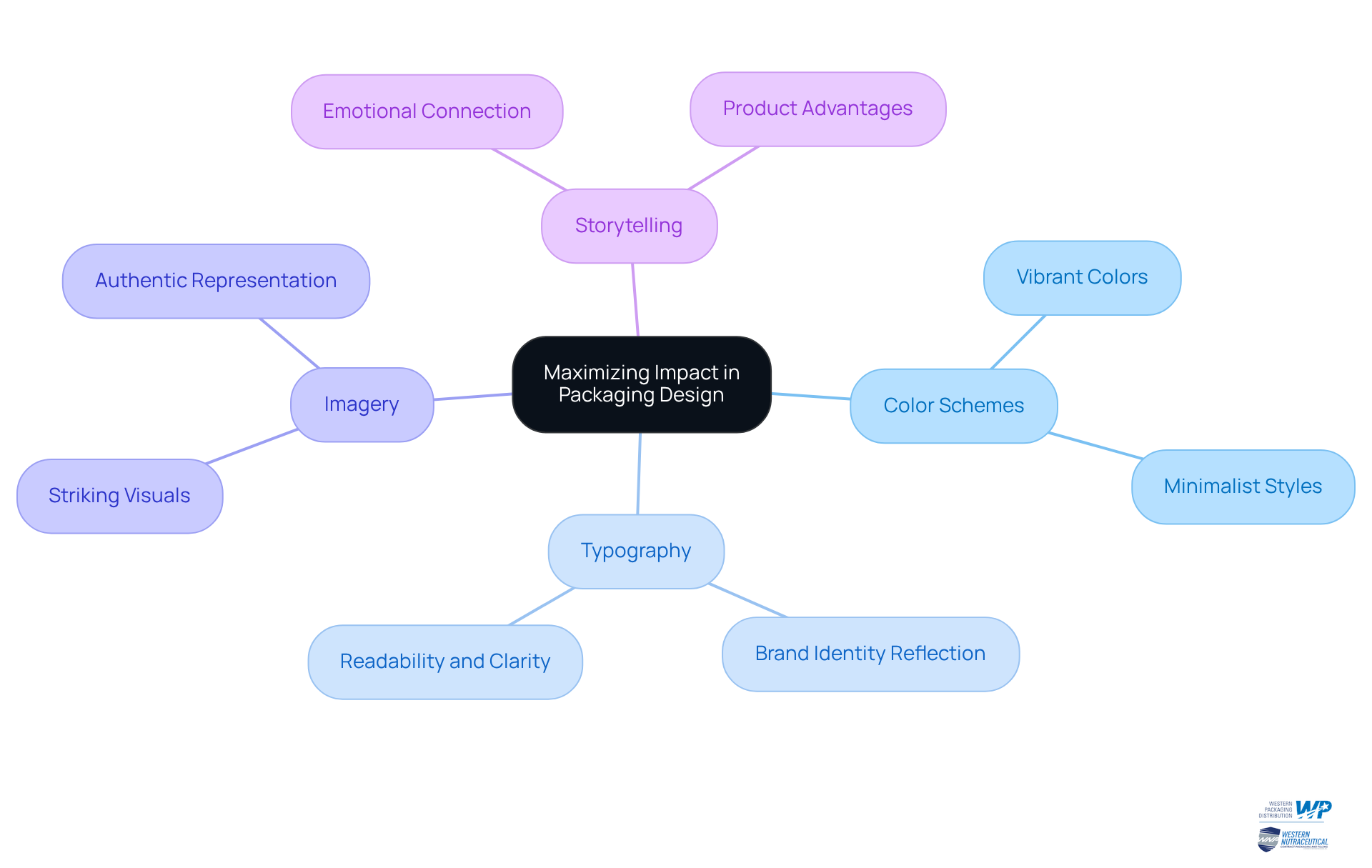
Integrate Filling Services for Streamlined Operations
Combining filling services with secondary packaging solutions significantly enhances operational efficiency. By synchronizing these processes, businesses can achieve reduced lead times and lower the likelihood of production errors. Companies that offer both filling and wrapping services establish a seamless workflow, reducing handling time and related expenses. This integration fosters improved quality control, as a unified team manages both stages of production.
Organizations should assess their current operations and explore partnerships with Western Packaging, which offers comprehensive 3PL services tailored to optimize supply chain efficiency. Their solutions encompass:
- Warehousing
- Inventory management
- Logistics
This allows businesses to focus on their core competencies while enhancing overall productivity. The implementation of high-speed filling systems, capable of processing up to 1,500 containers per minute, exemplifies how advanced technology can streamline operations. Furthermore, the use of secondary packaging solutions in filling and wrapping can lead to significant enhancements in efficiency and product quality, presenting a compelling case for integrated services in the nutraceutical sector.
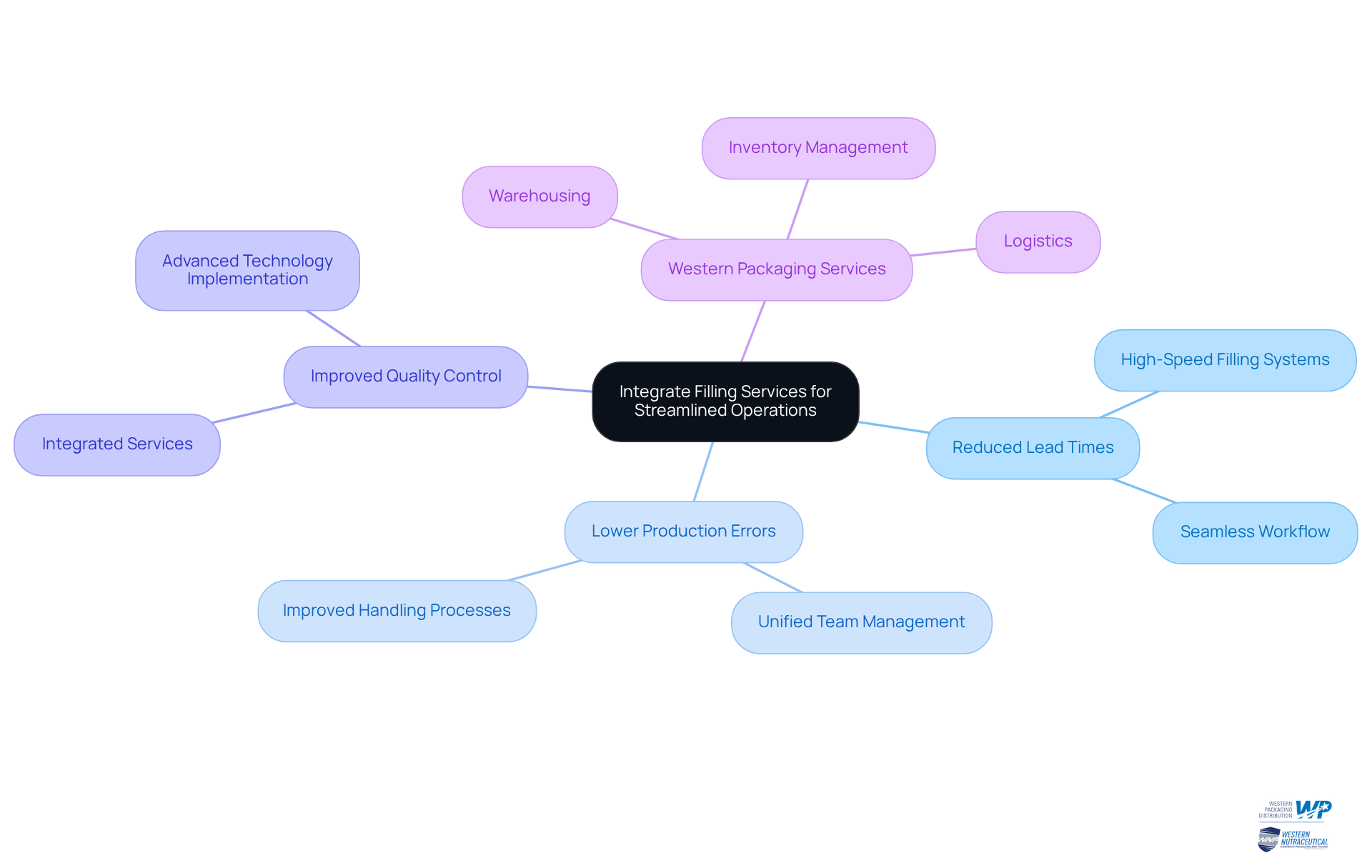
Ensure Regulatory Compliance in Nutraceutical Packaging
Ensuring regulatory compliance in nutraceutical containers is paramount for maintaining consumer trust and avoiding legal repercussions. Companies must remain vigilant about the regulations governing labeling, ingredient disclosure, and health claims in their target markets. This responsibility entails adhering to regulations established by entities such as the FDA or EFSA, which delineate the essential details required on labels.
Regular audits of packaging processes and materials are crucial for ensuring compliance, and consulting with regulatory experts can help navigate complex requirements. By prioritizing compliance, companies not only enhance their credibility but also protect their brand reputation in a competitive marketplace.
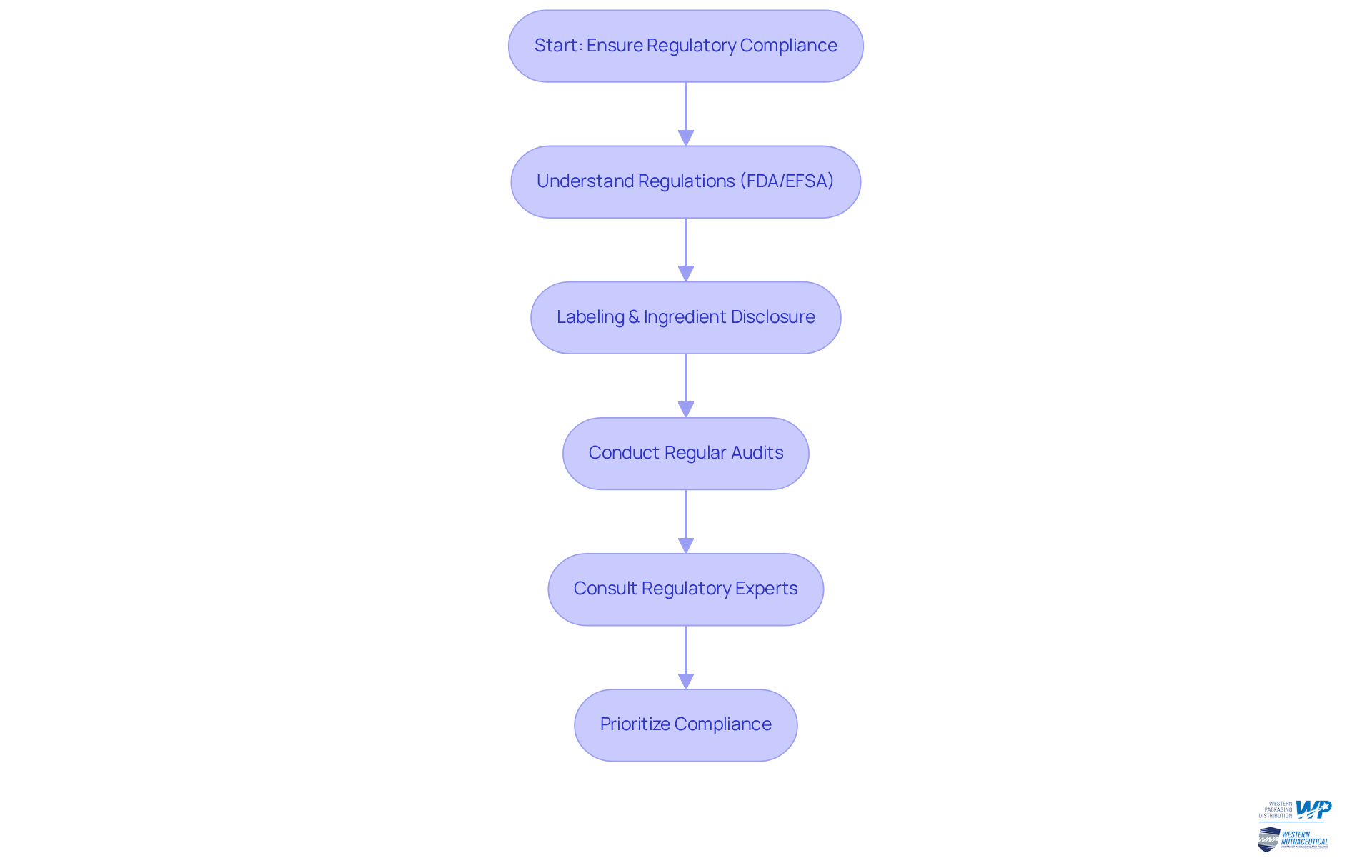
Conclusion
Effective secondary packaging solutions are pivotal to the success of products, particularly within the nutraceutical sector. By safeguarding primary containers, enhancing brand visibility, and ensuring compliance with regulations, companies can significantly elevate customer satisfaction and operational efficiency. The importance of innovative and sustainable practices in secondary packaging cannot be overstated; these practices align with modern consumer expectations and industry trends.
This article has highlighted various best practices, including:
- The integration of design elements to enhance customer experience
- The incorporation of filling services for streamlined operations
- The necessity of regulatory compliance
Each of these components contributes to a holistic approach that not only protects products but also fosters a strong connection with consumers. By prioritizing aesthetics, functionality, and sustainability, businesses can effectively differentiate themselves in a competitive marketplace.
Ultimately, the significance of secondary packaging extends beyond mere logistics; it is a crucial element that shapes consumer perceptions and influences purchasing decisions. Companies are encouraged to adopt these best practices and continuously innovate their packaging strategies to meet evolving market demands. By doing so, they can enhance brand loyalty, improve operational efficiencies, and ensure that their products stand out in an increasingly crowded retail landscape.
Frequently Asked Questions
What is secondary packaging and why is it important?
Secondary packaging is the outer layer that contains and protects primary containers holding the item. It is important because it safeguards items during transport, provides essential information, enhances brand visibility, and improves customer satisfaction and loyalty.
How does secondary packaging benefit companies in the nutraceutical industry?
In the nutraceutical industry, secondary packaging is vital for maintaining item integrity and consumer confidence. It ensures products arrive undamaged and are attractively presented, which can lead to increased customer satisfaction and loyalty.
What are the recent trends in secondary packaging?
Recent trends indicate a rising dependence on contract services for secondary wrapping, with 65 percent of industry participants outsourcing some production processes. Additionally, 75 percent are collaborating more frequently with suppliers on new secondary container designs and strategies.
How are companies focusing on sustainability in secondary packaging?
Companies are increasingly seeking to reduce material usage and replace non-sustainable materials with eco-friendly alternatives. A case study showed a nutraceutical manufacturer revamped its secondary containers to enhance sustainability while maintaining product integrity.
What common pitfalls do companies face regarding secondary packaging?
Companies often undervalue the significance of container aesthetics and neglect the logistics of distribution. These oversights can lead to higher expenses and customer dissatisfaction.
How can effective packaging enhance customer experience?
Effective packaging shapes the customer experience by using high-quality materials and innovative designs, creating a memorable unboxing experience. Features like easy-to-open designs and clear labeling empower customers and align with their values.
What methods can businesses use to understand customer preferences for packaging?
Businesses should consider conducting client surveys or focus groups to gather insights on packaging preferences, allowing them to tailor their packaging solutions to meet customer expectations effectively.




